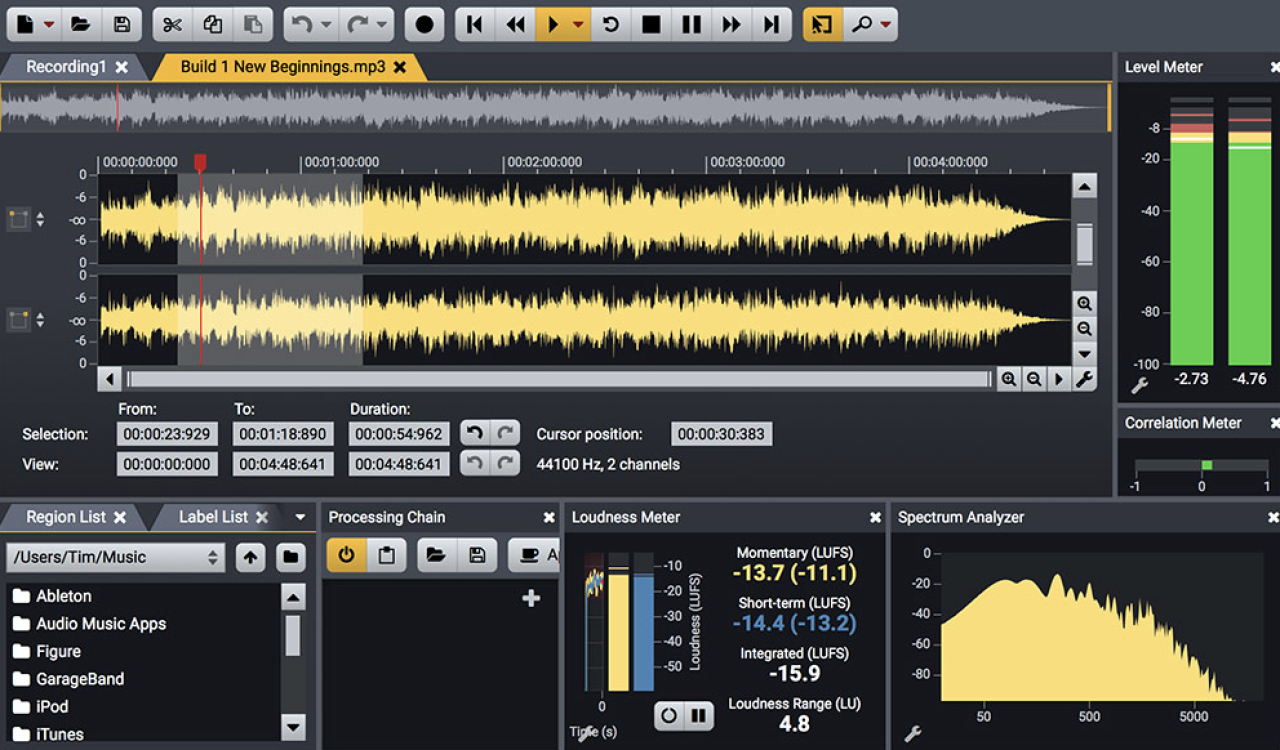Audio editing software has become an indispensable tool for sound production across various industries. From music production and podcasting to film and video game development, these software applications empower creators to manipulate audio, enhance its quality, and craft unique sonic experiences.
Table of Contents
These software programs provide a wide array of features, including waveform editing, mixing, mastering, and effects processing. They allow users to trim, fade, and splice audio clips, adjust volume levels, apply equalization and compression, and add various effects like reverb, delay, and distortion. This comprehensive set of tools enables audio professionals and enthusiasts alike to refine their audio recordings, achieve desired sonic characteristics, and create compelling soundtracks.
Integration with Other Software and Hardware: Audio Editing Software

Audio editing software is not an isolated tool. It seamlessly integrates with other software and hardware, forming a robust ecosystem for professional audio production. This integration allows for a more efficient and comprehensive workflow, maximizing creativity and efficiency.
Integration with Digital Audio Workstations (DAWs)
DAWs are the central hub for audio production, providing a platform for recording, editing, mixing, and mastering. Audio editing software often integrates with DAWs through plugins, allowing users to leverage the specialized features of each application. For example, a DAW might be used for recording and mixing, while an audio editing software is used for specific tasks like noise reduction or audio restoration.
- Plugin Integration: Audio editing software often provides plugins that can be loaded into DAWs. These plugins offer specialized tools like noise reduction, equalization, and audio restoration, enhancing the audio editing capabilities within the DAW’s environment.
- File Compatibility: Both audio editing software and DAWs typically support common audio file formats, ensuring seamless file transfer and compatibility between the two applications. This enables users to easily move audio files between the applications for editing, mixing, and mastering.
- Automation and Workflow: Some audio editing software can be automated within DAWs, allowing for streamlined workflows. For instance, a DAW might trigger a specific audio editing task within the software based on user-defined parameters or events within the DAW’s timeline.
Integration with Music Notation Software
Music notation software, like Sibelius or Finale, allows users to create and edit musical scores. Audio editing software can integrate with these programs, facilitating the transfer of musical information between them. This enables users to generate audio from a musical score, or to edit an audio recording based on the notation.
- Score-to-Audio Conversion: Some audio editing software can import music notation files and generate audio based on the score. This is particularly useful for composing and creating music without the need for traditional recording methods.
- Audio-to-Score Conversion: Conversely, some software can analyze an audio recording and create a musical score, allowing users to capture and document existing music in a notation format.
- Workflow Enhancements: The integration between music notation software and audio editing software streamlines the workflow for musicians and composers. They can easily transition between creating a score and editing the corresponding audio, improving the overall creative process.
Integration with Audio Interfaces
Audio interfaces are hardware devices that connect microphones, instruments, and other audio sources to a computer. Audio editing software can interact with audio interfaces, enabling users to record and process audio directly through the software.
- Direct Recording: Audio editing software often supports direct recording through audio interfaces. This allows users to capture audio directly into the software, eliminating the need for intermediate recording devices or applications.
- Low-Latency Monitoring: Audio interfaces often provide low-latency monitoring, allowing users to hear the audio being recorded with minimal delay. This is crucial for musicians and performers who require real-time feedback during recording sessions.
- Hardware Control: Some audio editing software can be controlled through hardware devices like MIDI controllers or foot pedals connected to the audio interface. This allows users to control various software functions, such as playback, recording, and editing, directly through the hardware.
Future Trends in Audio Editing Software
The audio editing landscape is rapidly evolving, driven by advancements in artificial intelligence (AI), machine learning (ML), and cloud-based solutions. These technologies are poised to revolutionize how audio professionals work, offering unprecedented capabilities and efficiencies.
The Rise of AI and ML in Audio Editing, Audio editing software
AI and ML are transforming audio editing by automating tasks, enhancing workflows, and unlocking new creative possibilities.
- Automated Transcription and Subtitling: AI-powered tools are becoming increasingly adept at transcribing audio and generating accurate subtitles, saving editors significant time and effort.
- Noise Reduction and Audio Restoration: AI algorithms can effectively remove unwanted noise and restore degraded audio, enhancing the quality of recordings.
- Music Generation and Composition: AI-powered music generation tools are emerging, allowing users to create original music with specific styles and moods.
- Intelligent Audio Editing: ML models can analyze audio and suggest edits, such as identifying and correcting timing issues or suggesting appropriate transitions.
Ending Remarks

As technology continues to evolve, audio editing software is poised to become even more powerful and accessible. With the integration of artificial intelligence, machine learning, and cloud-based solutions, we can expect to see advancements in automation, intelligent audio analysis, and collaborative editing workflows. These innovations will further empower creators to push the boundaries of audio production and bring their sonic visions to life.
Audio editing software offers a plethora of tools to fine-tune sound, but sometimes you need a broader view. Business intelligence tools, like those found on appventurezone.web.id , can help analyze trends in your audio content, allowing you to understand what resonates with your audience and refine your editing strategies accordingly.
